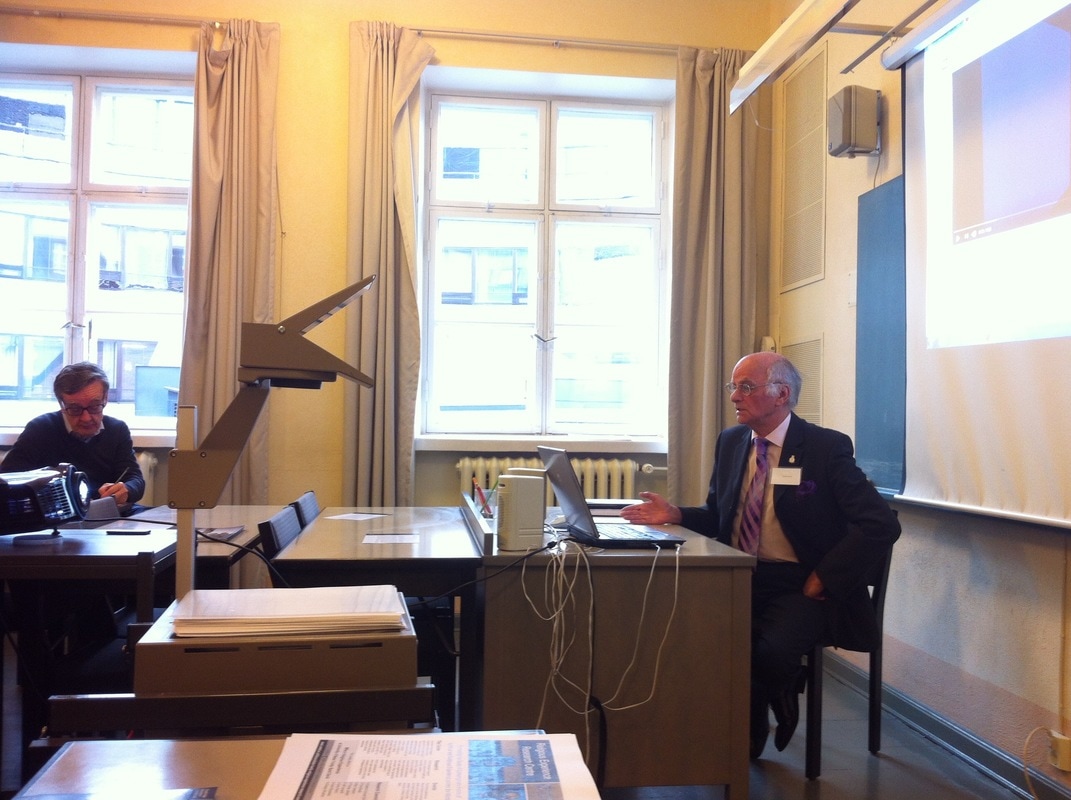 The Significance of Hallucinations in Dissociative Identity Disorder Dr Alan Sanderson
The Significance of Hallucinations in Dissociative Identity Disorder Dr Alan Sanderson
I’ve chosen an unusual topic but an important one. The significance of hallucinations in Dissociative Identity Disorder (DID) is important because DID includes a feature which I suggest will one day play a big role in our clinical work. I’ll expand on this later, but first some definitions, followed by clinical examples.
Hallucinations are usually defined as the apparent perception of a non-existent external object. That’s a slanted definition, for the wording is essentially negative, implying that hallucinations are unreal. This is, of course, strongly against the views of the experiencers, for whom hallucinations are meaningful events. Here are some famous historical figures who experienced hallucinations: Socrates, Jesus, Mohammed, Joan of Arc, Saint Teresa of Avila, Robert Schumann, Mahatma Gandhi and Carl Jung. This is just a tiny sample of the total. These individuals all heard voices or saw visions from which they received life-changing inspiration. They found nothing unreal about their experiences. Just the reverse.
We need a better definition of hallucination, one that can fit those inspiring experiences. Here’s one candidate: ‘A clear sensory experience of things inaccessible to others.’ Some of us might feel inclined to make exceptions of spiritual leaders and give them a special category, but with positively-felt hallucinations present in many of our patients, (more on this later) it’s hard to justify.
Multiple personality, DID as it became in DSM-4 (1994), has seen periods of great activity and great neglect. We are now in a period of neglect, in line with the current symptom suppression phase of contemporary psychiatry.
William James saw things very differently. He regarded double personality, as it was called in his day, as the way to a deeper understanding of consciousness. James used to say that in the study of human behaviour, extreme cases have special value because they best demonstrate the underlying mechanism. DID is an extreme behaviour, in which patients switch from one identity or personality to another without realising it, sometimes with chaotic results. We now know a great deal more about DID, especially its connection to extreme childhood abuse, but it still holds many secrets. The most curious of these and perhaps the least well understood is the Inner Self- Helper, a spiritual entity as distinct from an alternative personality (or alter, as they are usually called). I’ll expand on this later.
Diagnosis in DID has two essential features: firstly, two or more distinct personality states which alternately take control of executive function and secondly, amnesia (usually reported as ‘missing time’) occurring for significant events in the subject’s life. Voices are heard in around 50 per cent of cases. Characteristically, they are the alters speaking to each other. Conversations may be friendly or argumentative. Sometimes an unknown alter is discovered because of a reported voice. In a patient of mine, a distressed 7-year-old was identified because of constant inner crying. In DID, voices may be part of a flashback, which will often include a visual component. But they are real, and whether positive or negative, these hallucinations are often meaningful.
 My paper that was presented at the Wild and Domesticated conference in Helsinki last September has been submitted for publishing by the Afterlife Research Centre. A copy of the paper can be found here in pdf format. Spirit Release Therapy and the Art of Discernment.
My paper that was presented at the Wild and Domesticated conference in Helsinki last September has been submitted for publishing by the Afterlife Research Centre. A copy of the paper can be found here in pdf format. Spirit Release Therapy and the Art of Discernment.


